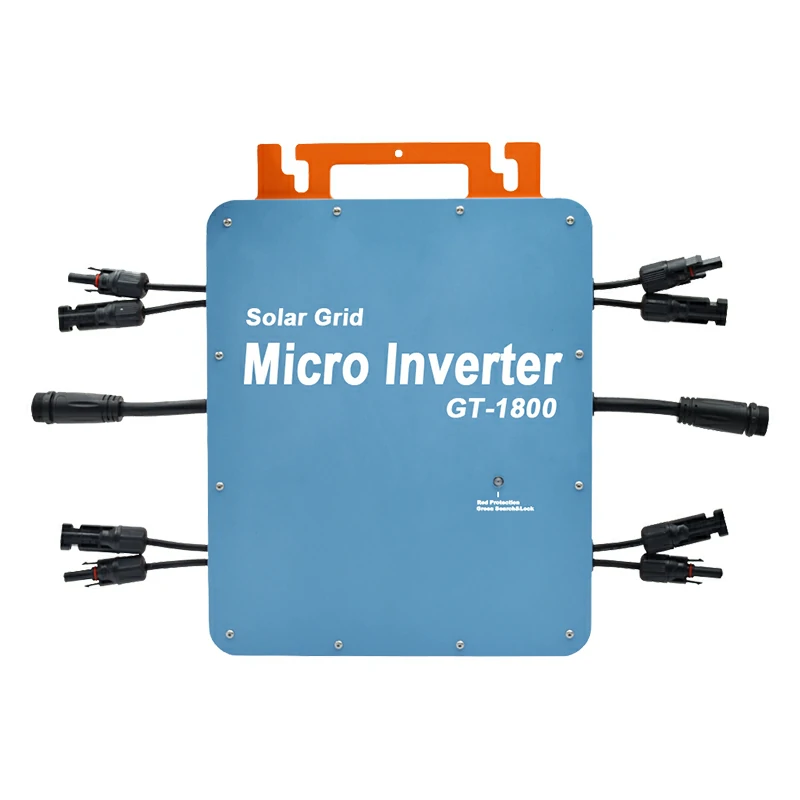Introduction
Solar micro inverters play a crucial role in modern solar power systems, converting the direct current (DC) generated by solar panels into alternating current (AC) for use in homes and businesses. Unlike traditional string inverters, which connect multiple solar panels in series, micro inverters are installed on each individual panel. This configuration allows for enhanced performance and monitoring capabilities.
Testing solar micro inverters is essential for ensuring optimal performance and reliability, especially for those considering a purchase. This article will guide potential buyers through the process of effectively testing solar micro inverters to address their concerns and help them make informed decisions.

Understanding Solar Micro Inverters
Definition and Functionality
A solar micro inverter is a device that converts the DC electricity produced by a single solar panel into AC electricity. By functioning at the panel level, micro inverters allow each panel to operate independently, maximizing energy production even when some panels may be shaded or underperforming.
Advantages of Micro Inverters
Micro inverters offer several advantages over traditional grid connected inverters:
- Panel-Level Optimization: Each panel operates independently, ensuring that shading or malfunctioning panels do not affect the overall system performance.
- Enhanced Safety Features: By operating at lower voltages, micro inverters reduce the risk of electrical hazards associated with high-voltage DC systems.
- Monitoring Capabilities: Many micro inverters come with built-in monitoring systems that provide real-time data on each panel’s performance, making it easier to identify issues promptly.
Why Testing is Essential
Performance Optimization
Testing solar micro inverters is critical for ensuring that each panel operates at maximum efficiency. By identifying any underperforming units early on, you can take corrective actions to optimize your system’s overall output.
Safety Assurance
Safety is paramount when dealing with electrical systems. Regular testing of micro inverters helps minimize risks associated with high-voltage DC power, ensuring that your installation remains safe for users and property.
Long-Term Reliability
Identifying issues early can prevent costly repairs and downtime. Regular testing enhances the long-term reliability of your solar energy system, allowing you to enjoy uninterrupted power generation.
Steps to Test a Solar Micro Inverter
1. Visual Inspection
Start with a thorough visual inspection of the solar micro inverter:
- Check for any physical damage or signs of wear.
- Ensure that all connections are secure and properly installed.
- Verify that the inverter is oriented correctly to maximize exposure to sunlight.
2. Electrical Testing
Using a multimeter, perform electrical tests to measure the output voltage and current:
- Connect the multimeter leads to the inverter’s output terminals.
- Measure the voltage and current while the system is operational.
- Compare your readings against the manufacturer’s specifications to ensure they fall within acceptable ranges.
3. Performance Monitoring
Leverage built-in monitoring systems:
- Access the monitoring software via your smartphone or computer.
- Track individual panel performance data over time.
- Look for discrepancies or underperformance indicators that may suggest issues with specific panels or their corresponding micro inverters.
4. Load Testing
Conduct load testing to assess how the inverter responds under different conditions:
- Connect the inverter to a controlled load (such as a resistive load).
- Measure its efficiency during peak and off-peak times.
- Ensure it can handle varying loads without significant drops in performance.
5. Temperature Check
Monitoring the operating temperature of your solar micro inverter is crucial:
- Use an infrared thermometer to check the inverter’s temperature during operation.
- Ensure it remains within safe limits; excessive heat can indicate underlying issues that need addressing.
Tools Required for Testing
To effectively test a solar micro inverter, you will need:
- A multimeter for measuring voltage and current.
- A smartphone or computer for accessing monitoring software.
- An infrared thermometer for temperature checks.
These tools will help you conduct thorough tests and gather accurate data on your inverter’s performance. Feel free to say “continue” when you’re ready for the next section!
Common Issues and Troubleshooting
Underperformance Issues
If you notice that your solar micro inverter is underperforming, several factors could be at play:
- Shading: Ensure that no objects are casting shadows on the solar panels. Even partial shading can significantly reduce output.
- Dirty Panels: Accumulation of dirt and debris on panels can hinder performance. Regular cleaning may be necessary.
- Faulty Equipment: If specific panels consistently underperform, it may indicate a malfunctioning micro inverter. Testing and replacing the faulty unit can restore optimal performance.
Overheating Problems
Overheating can lead to reduced efficiency and potential damage to your micro inverter. Common causes include:
- Poor Ventilation: Ensure that the inverter has adequate airflow around it. Avoid enclosing it in tight spaces.
- High Ambient Temperatures: If the installation area experiences extreme heat, consider relocating the inverter or providing shade.
- Electrical Overloads: Check for any signs of electrical overloads that may cause the inverter to overheat. This could be due to excessive load or faulty wiring.
Connection Failures
Connection issues can disrupt the performance of your solar micro inverter:
- Loose Connections: Periodically check all connections to ensure they are secure.
- Corroded Terminals: Inspect terminals for corrosion, which can impede electrical flow. Clean or replace corroded terminals as needed.
- Wiring Issues: If you suspect wiring problems, consult a professional electrician to diagnose and resolve any issues safely.
Conclusion
Testing solar micro inverters is a vital step for anyone considering purchasing this technology. By understanding how to effectively test these devices, potential buyers can ensure they are making informed decisions that will lead to optimal performance and reliability in their solar energy systems.
Regular testing not only enhances safety but also contributes to long-term reliability, allowing you to enjoy the benefits of renewable energy without interruption. As you consider investing in a solar micro inverter, remember that thorough testing can help you identify issues early and maintain peak performance throughout the life of your system.




